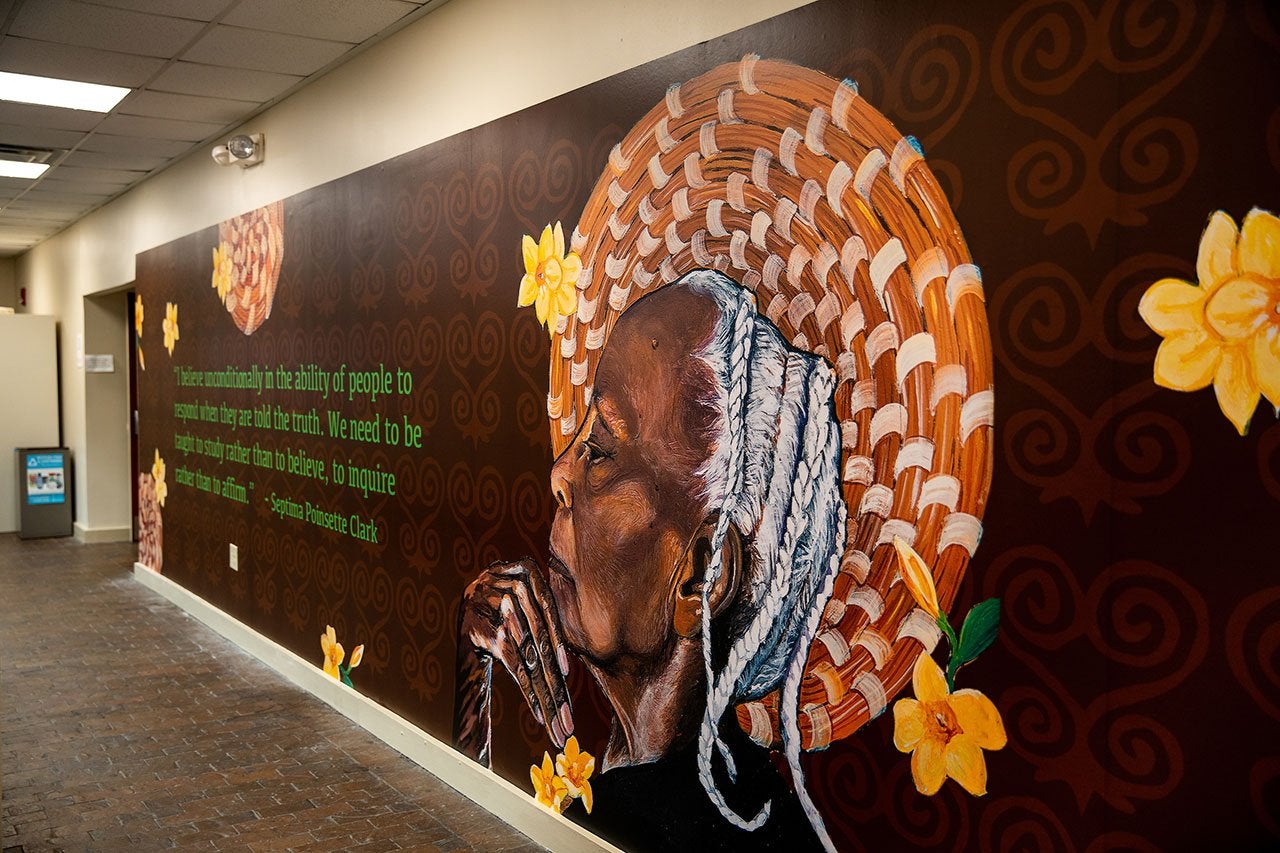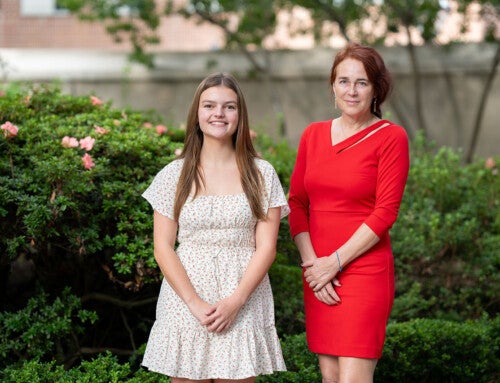Many achievements of Charleston native, educator and activist Septima Poinsette Clark (1898-1987) took place at locations on and near the College of Charleston campus. Clark was born at 105 Wentworth Street in 1898 (now part of the CofC campus) and was a student and later a teacher at the Avery Normal Institute (now the Avery Research Center for African American History and Culture at the College of Charleston) at 125 Bull St. In 1978, the College, during a ceremony in the Cistern Yard, awarded Clark an honorary doctorate in humane letters for 40 years of work as an educator, civil rights leader and advocate for the underprivileged.
In 2021, CofC’s President’s Historical Review Task Force formed the Committee for Commemoration and Landscapes (CCL) to tell a more complete and inclusive story of the institution’s past. One of the committee’s first initiatives was to interpret Septima Clark’s legacy as an educator, leader and activist, using text panels, images, archival documents, maps and a guided virtual tour.
“We’re eager for College of Charleston students to understand some of the great achievements of Septima Clark, who was called ‘the mother of the Civil Rights Movement,’” says CCL co-chair Julia Eichelberger, director of Southern studies and Marybelle Higgins Howe Professor of Southern Literature. “Not only was she an incredible educator and leader, but she overcame significant obstacles throughout her life. Students should be inspired by the way Clark surmounted these obstacles and made positive changes that many people believed were impossible. Her determination and her ability to get things done are tremendously inspiring.”
On Thursday Feb. 23, 2023, at 5 p.m. the College will honor Clark with the opening of a new exhibition in the Septima Clark Memorial Auditorium, room 118, of the Thaddeus Street Jr. Education Center, located at 25 St. Philip St. A new mural celebrating Clark’s power and wisdom titled “Saint Septima with Carolina Jasmine” will greet visitors in the center’s atrium.
“I read her memoir and wanted to tell her story,” says Georgetown, South Carolina, artist Natalie Daise, who used acrylic and gold leaf in the original painting, which was purchased by the Highlander Folk School in Tennessee where Clark taught classes. “Every stroke in her face was a meditation. I wanted to show her humanity. She was feisty. Her eyes tell you that she’s not looking to be interpreted by anyone.”
The collective hope is that students will be inspired by the story of Clark’s life as captured in the mural and interpretive panels inside the auditorium bearing Clark’s name. Undergraduate students in a museum studies class taught by Joanna Gilmore, adjunct professor of museum studies, were involved in the exhibition planning.
“We discussed the research into Clark’s life and the different design considerations with students in the College’s 1967 Legacy Program and members of the Alpha Kappa Alpha sorority,” says Gilmore, who designed the exhibit. “The students completed a survey and submitted a critique about different design options for the exhibition, which was very helpful in thinking about the language we used, the colors for a classroom setting, the balance of images and text.”
Learning about Clark and being able to help shape an exhibit of her life made an impact on students like Aaliya Wiggs, a 1967 Legacy Scholar and marine biology major.
“As 1967 Legacy Scholars, we are encouraged to learn more about African American trailblazers who have built the path for equality and opportunity. Septima Clark embodies what it means to be a trailblazer, making critical strides in the Civil Rights Movement and advancement of African Americans,” says Wiggs. “While Clark was not always given the recognition she deserved for her contributions, the College of Charleston’s Septima Clark exhibition and mural installation not only honors her legacy but stands as a testament to the immense amount of progress. I am grateful to have gotten the chance to be a part of this project, and I hope that others will take the time to visit the exhibit and learn more about the life of this remarkable woman.”
Gilmore was equally grateful for the experience as was Valerie Frazier ’91 (M.P.A ’94) , co-chair of the CCL, associate professor of English and director of the 1967 Legacy Program.
“Working on the Septima Poinsette Clark exhibition was a humbling process,” says Gilmore. “I’m glad that the Committee for Commemoration and Landscapes identified recognizing and interpreting Clark’s life as a priority. Though I knew who Septima Clark was, I didn’t have a good understanding of her lifelong activism and her impact on the civil rights movement, especially through the development of citizenship schools. Clark is an incredibly inspiring woman, who dedicated not just a portion of her life, but seven decades to fighting against systemic racism, sexism and economic inequities. What strength and tenacity! We would all do well to emulate her tireless passion to change society for the good of others.”
“As a Black woman educator and fellow sorority member of Alpha Kappa Alpha Sorority, Inc., Gamma Xi Omega, the Charleston chapter where Dr. Septima Clark served as president, I am honored to walk in her footsteps and share her legacy with the 1967 Legacy Scholars and all of my students,” adds Frazier. “Dr. Clark encouraged students to challenge themselves and disrupt old ways of thinking. When students and visitors walk into room 118 of the Education Center, we want them to see the possibilities of a brave new world that celebrates diversity, equity, inclusion and belonging.”
Walking tours on the Discovering our Past app and website were created to augment the installation of interpretive panels in the Septima P. Clark Auditorium.
The Septima Clark exhibition is the first step in creating a larger interpretive plan for the College of Charleston campus. To share your ideas for the campus’ interpretive plan follow this link to complete a 10 question survey: https://docs.google.com/forms/d/e/1FAIpQLScL5dUL80LofXpykw1TpL1IT5dNjMOm4MBNoIapYmOEKUMgeQ/viewform







